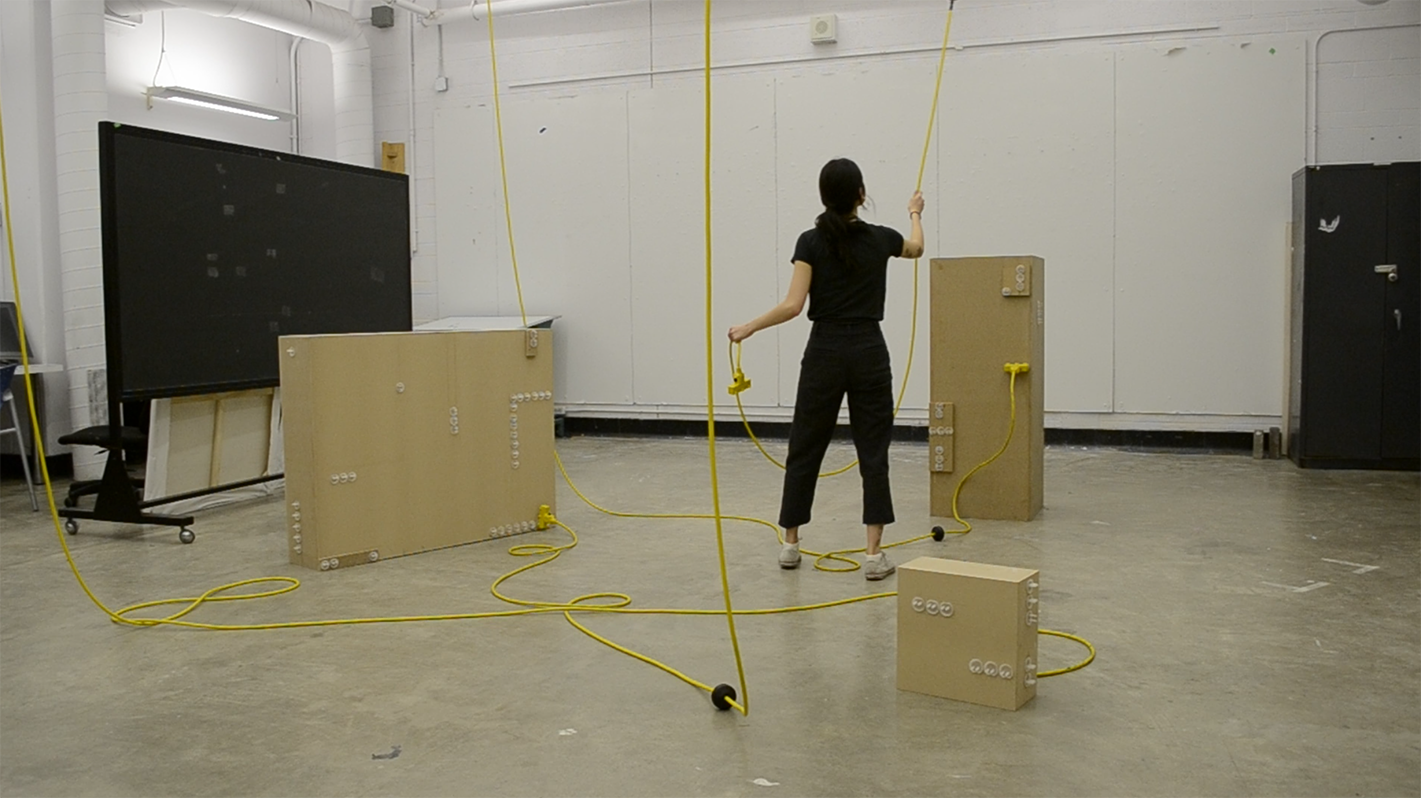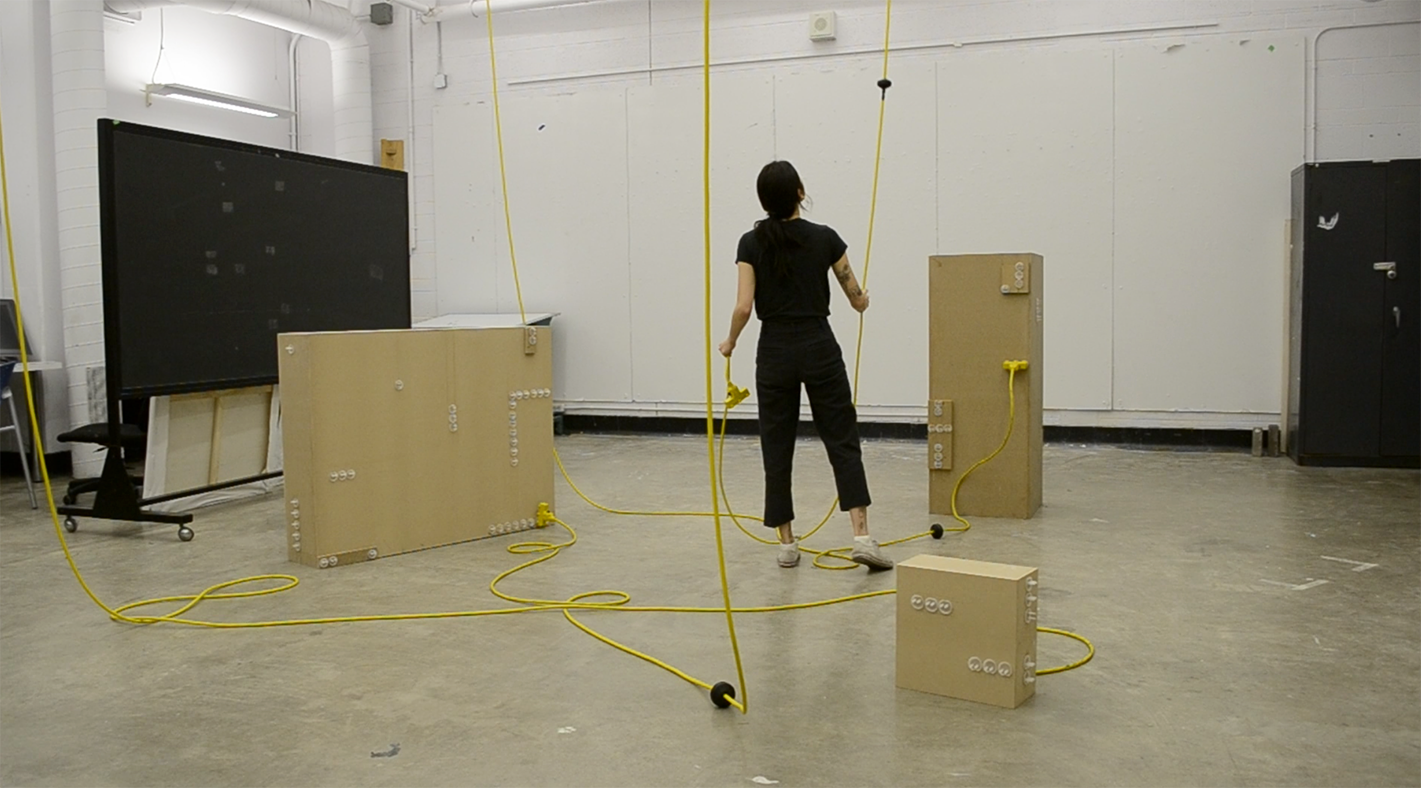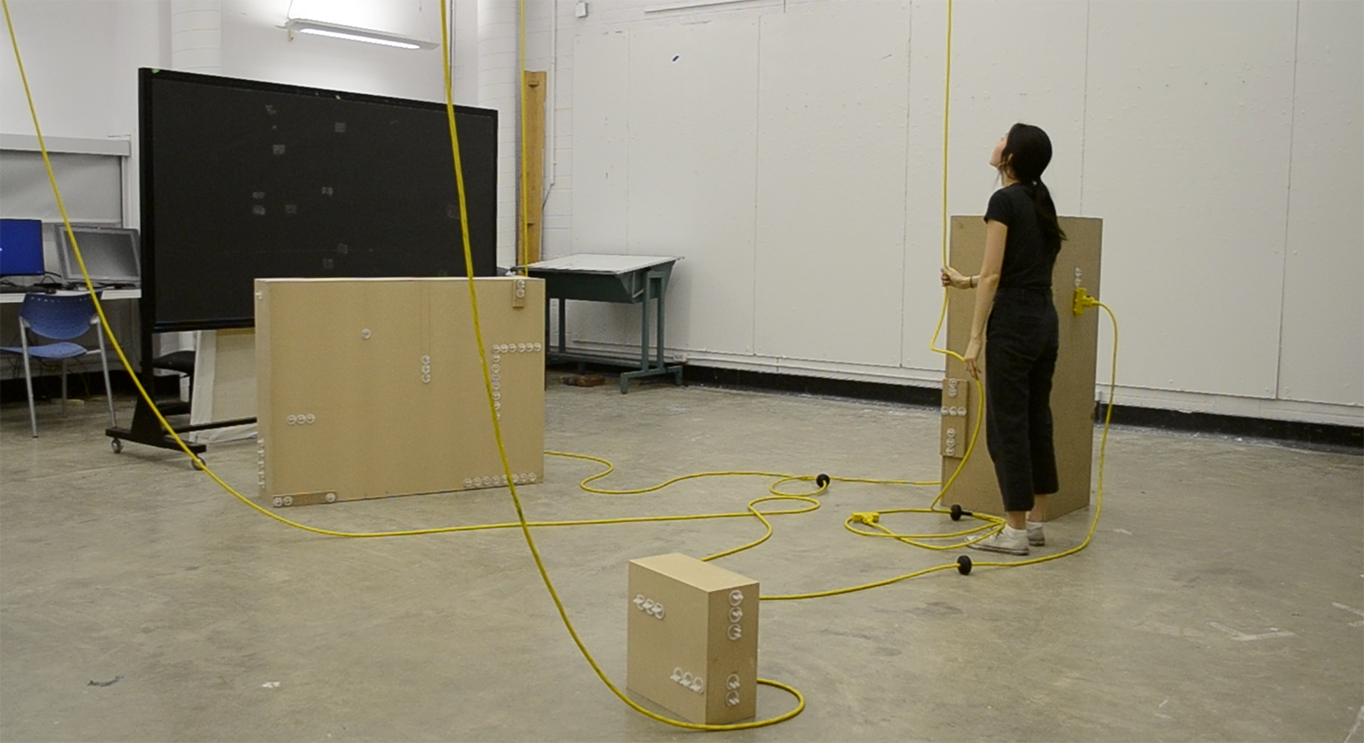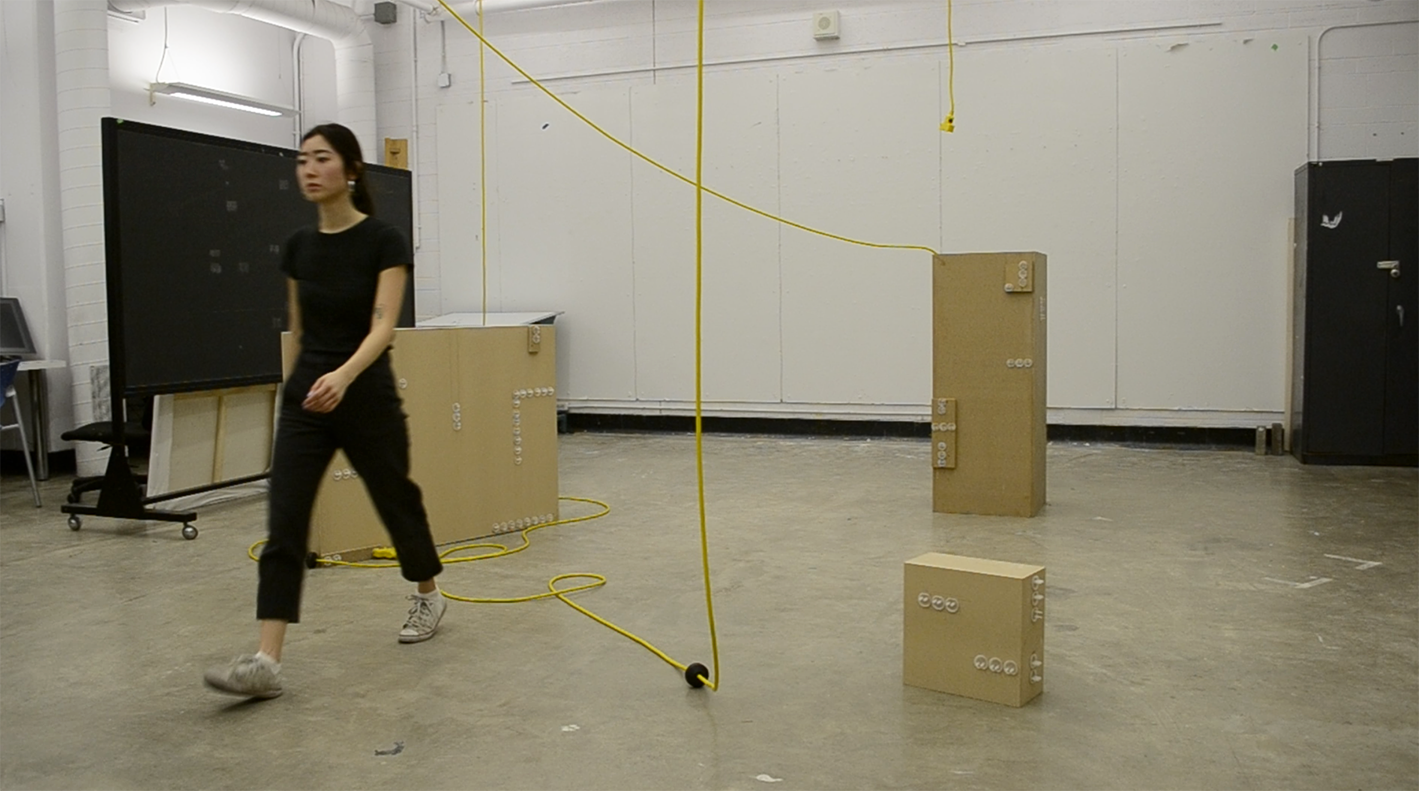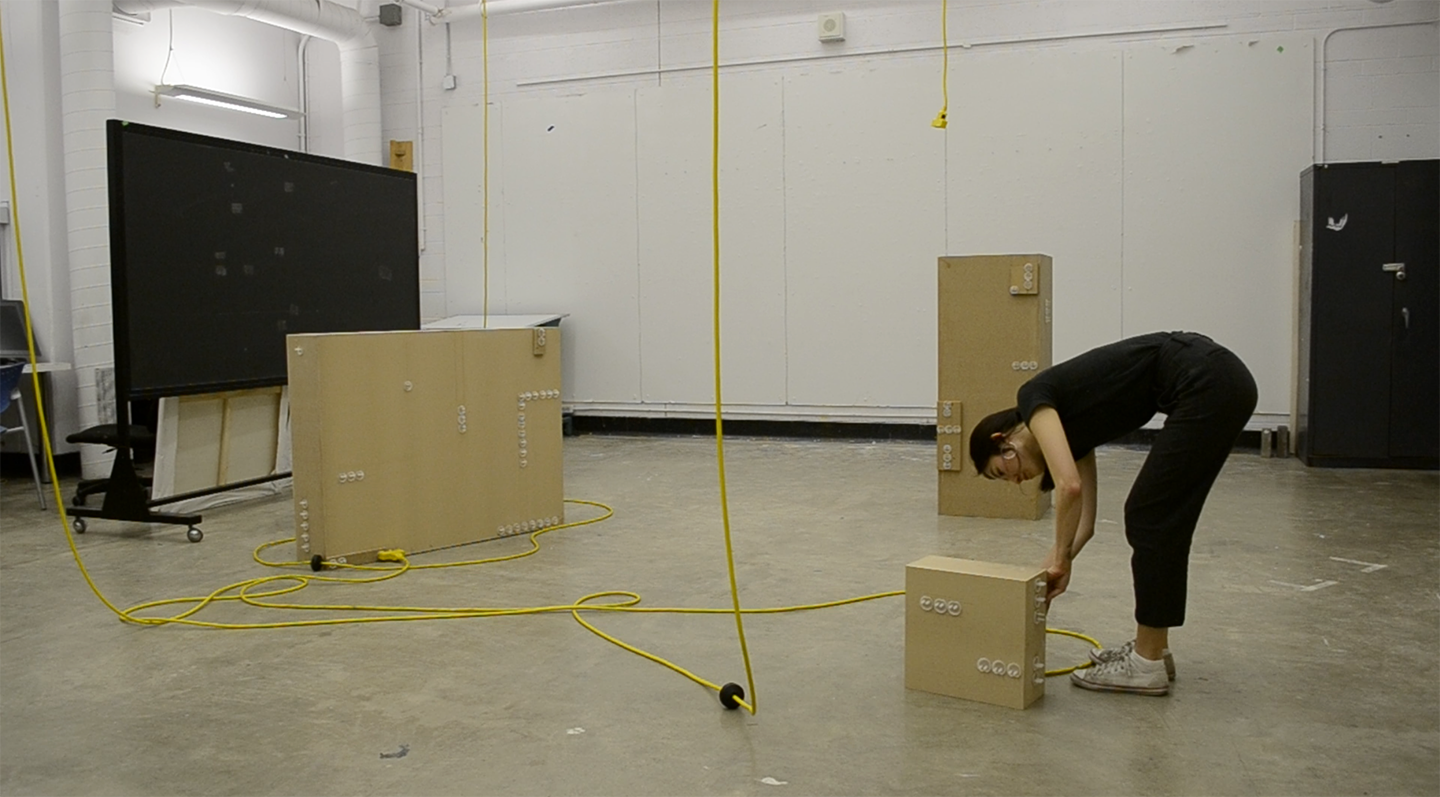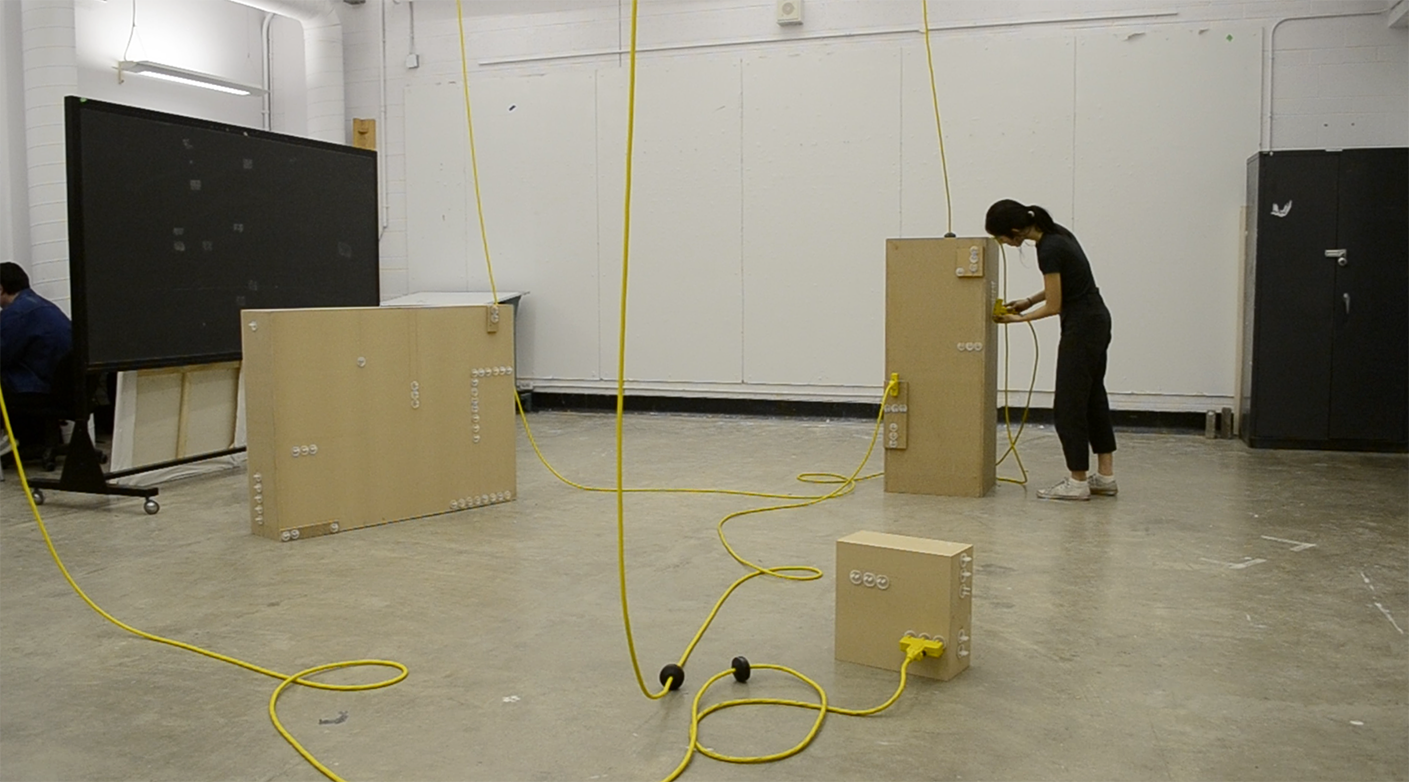Activating nothing, Em/powering nothing, 2019
Site Specific Performance
MDF board, extension cords in RM 460, outlet plugs
I take a functioning object to not-perform its function while using its form to the fullest.
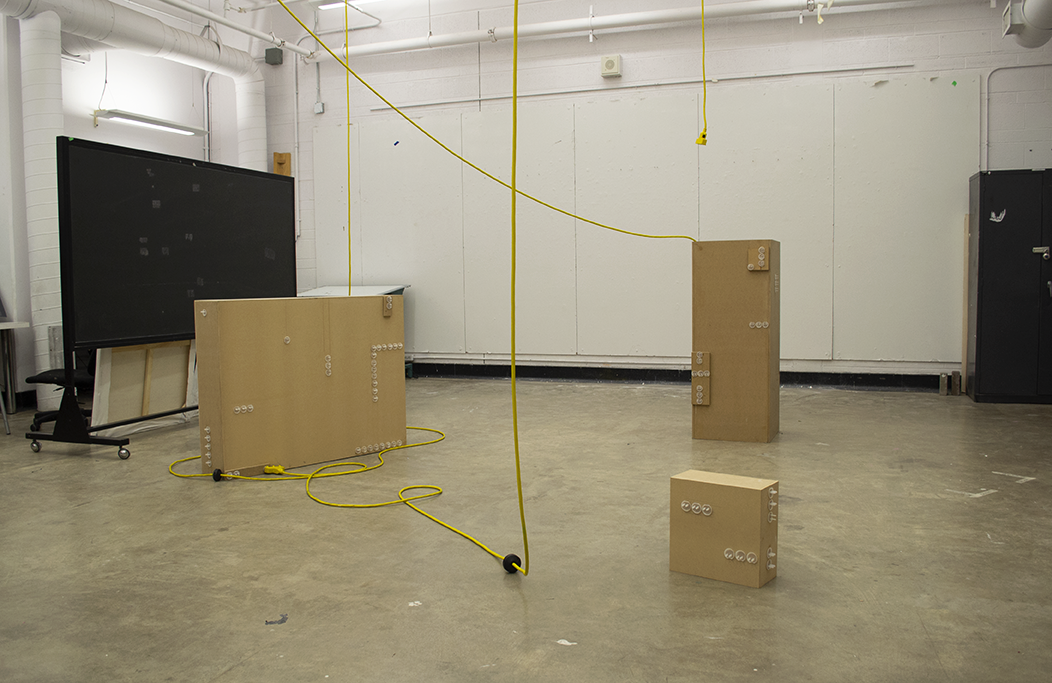
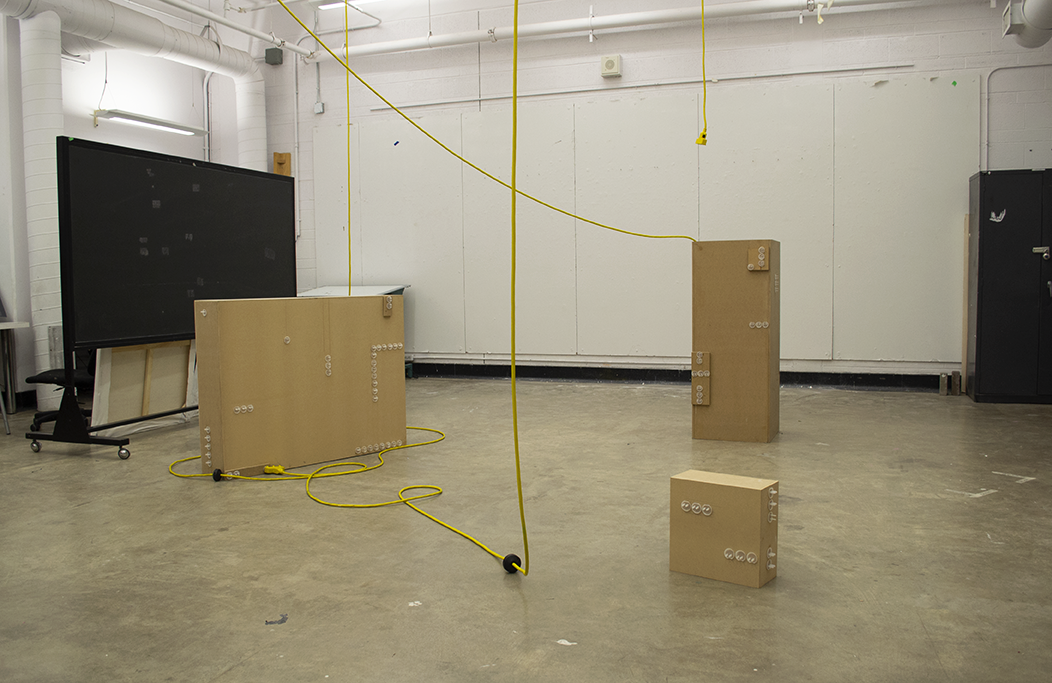
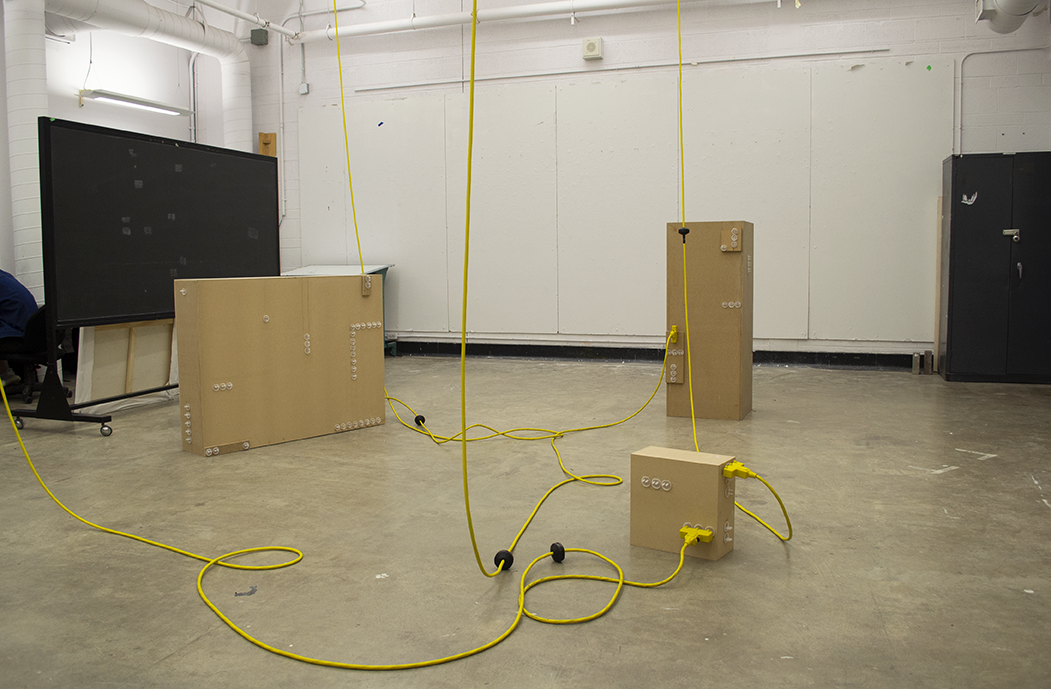
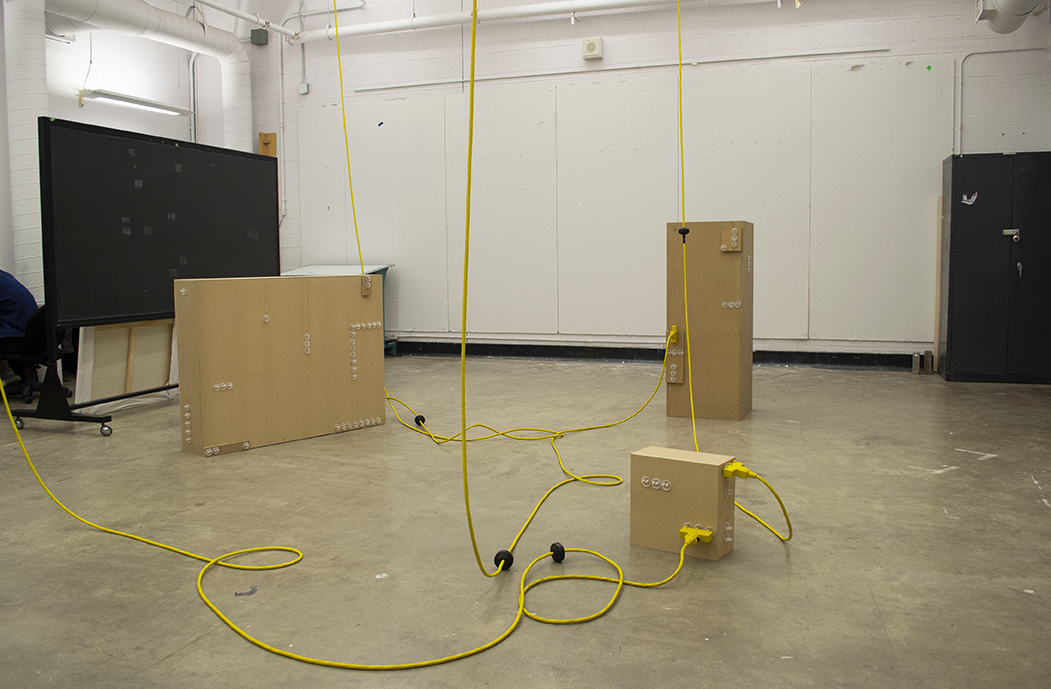

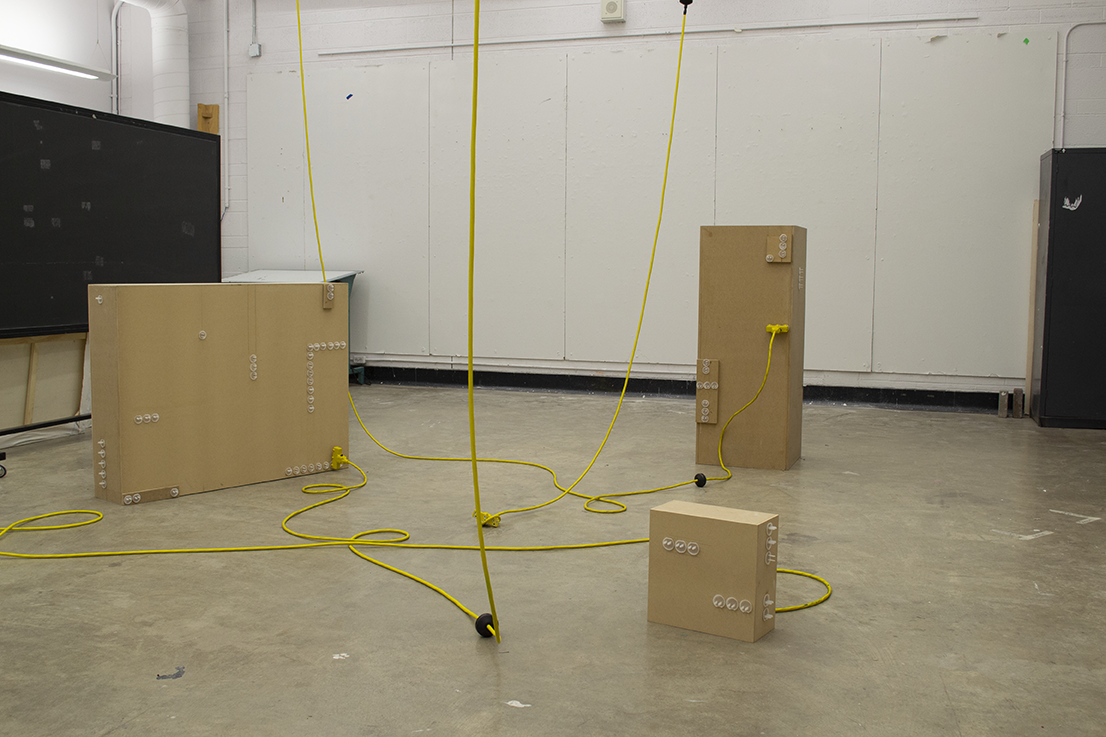
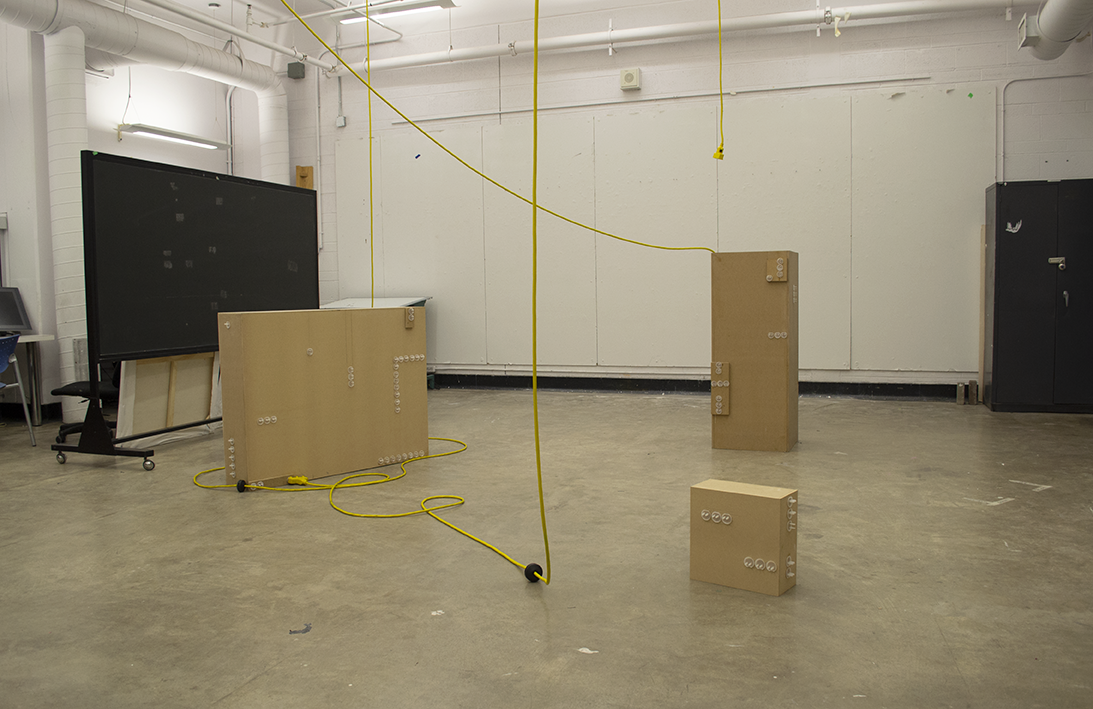
The outlets hanging off the diagonal ceilings of room 460…. I’m curious about them because although they are not integrated into the architecture of the actual building, they are so essential to the classroom setting. Desks and the way students sit are sometimes determined by the position of the outlets. The way they stick out from the white ceiling is visually stimulating in its bright yellow color.
I am interested in minimalist and conceptual strategies. I abuse the minimalist’s geometric shapes, its size and repetition. There is a quiet, gestalt experience in the arrangement of the plinths and the plug protectors arranged on the plinths. The plinths are larger than the body with intention to create self awareness that the object and body exists in the same space. The outlet cords act as a drawing tool, the plinths and its surrounding space acts as the canvas. It is reminiscent of Duchamp’s Mile of String, 1994 where he uses the entire gallery as a canvas.
Nothingness and dullness is something I am becoming more interested in. I am using a functioning object to not-perform its function while still using its form to the fullest. It makes me question the entire gesture. I’m interested in art as a tool of exploration of the mundane to accent what is insignificant and overlooked. I find this often provokes an exploration of futility (something useless/ pointless); for example, this project where actions fully articulate an object’s surface qualities but not its full function or purpose (of activation). This interest comes from my studies of art of the 70s. What function does art serve and does it have to serve a function? In an interview between Bruce Nauman and Jan Butterfield (Bruce Nauman: The Center of Yourself, 1975), Butterfield asks Nauman “how little of [societal overlap for pieces to be visible] can we have and still have an “art form” rather than individual exercise on your part?” (Kraynak, 180). I often find myself thinking if what I make is a presentable art form because I make it for myself. If it is interesting for me, it is enough for me. However, does that make it an acceptable “art form”? Or work of “art”? Butterfield also mentions the question (toward Nauman) “is this even remotely interesting or comprehensible to anyone besides myself?” These are questions I think of every time I make work, sometimes feeling discouraged and sometimes feeling it is irrelevant and I should make what I want to make.
